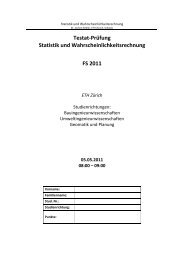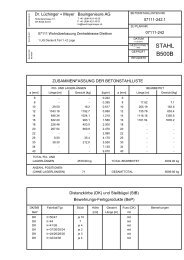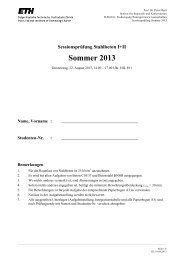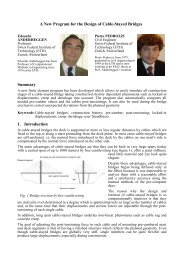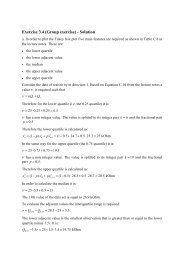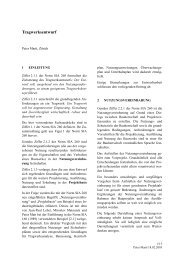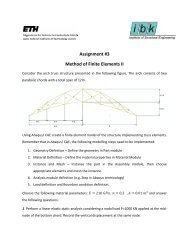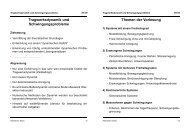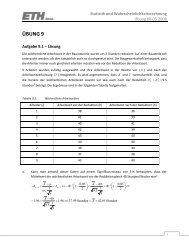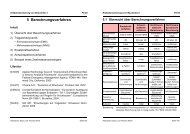The Finite Element Method for the Analysis of Non-Linear and ...
The Finite Element Method for the Analysis of Non-Linear and ...
The Finite Element Method for the Analysis of Non-Linear and ...
Create successful ePaper yourself
Turn your PDF publications into a flip-book with our unique Google optimized e-Paper software.
Elastoplasticity<br />
<strong>The</strong> strain <strong>and</strong> stress increments are given by:<br />
dɛ rs = dɛ E rs + dɛ P rs<br />
dσ ij = C E ijrs (dɛ rs − dɛ P rs)<br />
where C E ijrs are <strong>the</strong> components <strong>of</strong> <strong>the</strong> elastic constitutive tensor <strong>and</strong> dɛ rs, dɛ E rs,<br />
dɛ P rs are <strong>the</strong> components <strong>of</strong> <strong>the</strong> total strain increment.<br />
To calculate <strong>the</strong> plastic strains we use <strong>the</strong> following three properties:<br />
Yield Function f y(σ, ɛ P )<br />
f y < 0 ⇒ Elastic behavior<br />
f y = 0 ⇒ Plastic behavior<br />
f y > 0 ⇒ Inadmissible<br />
Flow rule<br />
<strong>The</strong> yield function is used in <strong>the</strong> flow rule in order to obtain <strong>the</strong> plastic<br />
strain increments<br />
λ is a scalar to be determined<br />
dɛ P ij = λ ∂fy<br />
∂σ ij<br />
Hardening rule<br />
This specifies how <strong>the</strong> yield function is modified during plastic flow<br />
Institute <strong>of</strong> Structural Engineering <strong>Method</strong> <strong>of</strong> <strong>Finite</strong> <strong>Element</strong>s II 23





